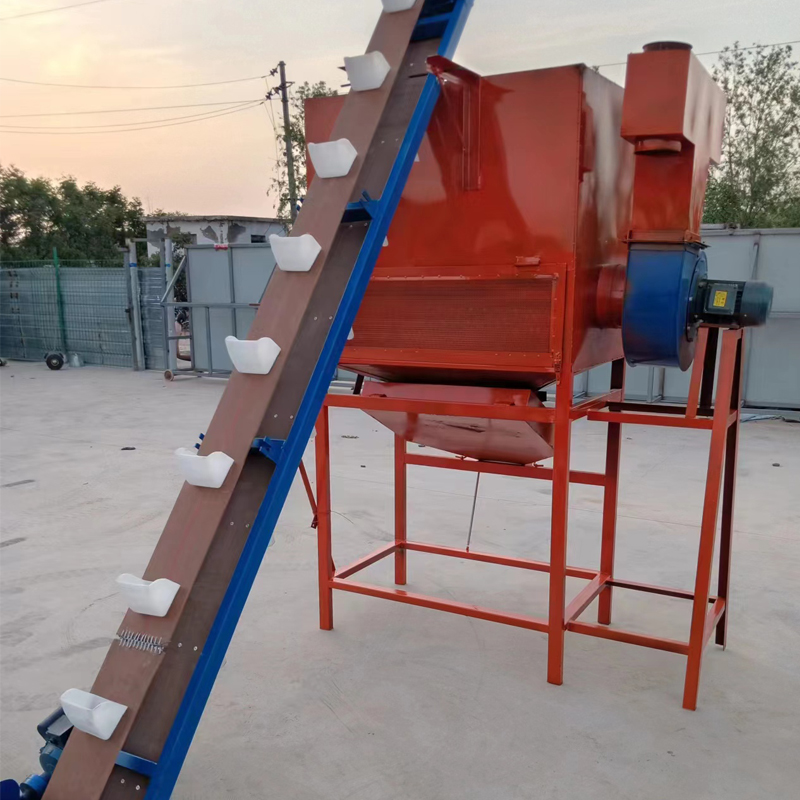Understanding the Importance of Feed Mixers in Animal Nutrition.
Dec . 15, 2024 23:04 Back to list
Understanding the Importance of Feed Mixers in Animal Nutrition.
The Role of Feed Mixers in Modern Agriculture
Feed mixers play a crucial role in livestock management and are essential for ensuring that animals receive a balanced diet. As agriculture evolves, the importance of precise dietary formulations becomes increasingly clear. This is where feed mixers come into play, providing an efficient means to blend various feed ingredients, thereby optimizing nutrition for livestock.
At the core of animal nutrition is the need for a well-balanced diet that meets the specific requirements of different animal species. Ruminants, such as cows and sheep, require a high fiber content, whereas monogastric animals, like pigs and chickens, need a protein-rich diet. Properly formulated feeds enhance growth rates, reproductive performance, and overall animal health. However, achieving this balance manually can be time-consuming and inefficient. Feed mixers streamline this process, allowing farmers to prepare large batches of feed that are homogenous and nutritionally complete.
Feed mixers come in various types, including vertical, horizontal, and twin-screw mixers. Each type has its unique advantages depending on the scale of production and specific feed formulations required. Vertical mixers are well-suited for small to medium operations, allowing for easy loading and unloading of materials. Conversely, horizontal mixers are ideal for larger farms, offering a quicker mixing process and accommodating larger batches. Twin-screw mixers are often used in commercial applications, providing superior mixing capabilities and the ability to incorporate liquid additives seamlessly.
The efficiency of feed mixers significantly impacts the productivity of livestock operations
. With the help of modern technology, many mixers are now equipped with advanced features such as programmable controls and load cells. These innovations enable farmers to create precise formulations and monitor the mixing process in real-time. Accurate mixing ensures that all feed ingredients are evenly distributed, minimizing waste and enhancing the nutritional value of the diet.feed mixers

One of the significant benefits of feed mixers is the cost savings associated with bulk purchasing of feed ingredients. By mixing their own feed, farmers can select high-quality raw materials and potentially lower their feed costs. Moreover, by customizing the feed specifically for their livestock's dietary needs, farmers can improve feed efficiency, meaning animals convert feed into weight gain more effectively. This not only improves the bottom line but also promotes sustainable practices in livestock production.
In addition to presenting economic advantages, the use of feed mixers supports animal welfare. A well-balanced diet reduces the risk of nutritional deficiencies and related health issues in livestock. Additionally, optimized feed formulations can lead to better digestion and absorption of nutrients, further enhancing the health and productivity of the animals. Healthy livestock not only benefit farmers but also contribute to the overall food system by ensuring higher-quality meat, milk, and eggs for consumers.
The global demand for animal products is steadily increasing, driven by growing populations and changing dietary preferences. As a result, the efficiency and effectiveness of livestock production are more critical than ever. Feed mixers reflect the industry's push for modernization, enabling farmers to meet demand while ensuring the welfare of their animals. Investing in a high-quality feed mixer can yield significant returns in terms of productivity and animal health.
In conclusion, feed mixers are an indispensable tool in contemporary agriculture, enhancing the nutritional quality of animal diets and supporting sustainable farming practices. As technology continues to advance, we can expect further improvements in feed mixing, which will help farmers meet the demands of the future while prioritizing animal health and productivity. By investing in these critical machines, farmers can not only optimize their operations but also contribute positively to the broader agricultural landscape.
-
Hot Sale 24 & 18 Door Rabbit Cages - Premium Breeding Solutions
NewsJul.25,2025
-
Automatic Feeding Line System Pan Feeder Nipple Drinker - Anping County Yize Metal Products Co., Ltd.
NewsJul.21,2025
-
Automatic Feeding Line System Pan Feeder Nipple Drinker - Anping County Yize Metal Products Co., Ltd.
NewsJul.21,2025
-
Automatic Feeding Line System - Anping Yize | Precision & Nipple
NewsJul.21,2025
-
Automatic Feeding Line System - Anping Yize | Precision & Nipple
NewsJul.21,2025
-
Automatic Feeding Line System-Anping County Yize Metal Products Co., Ltd.|Efficient Feed Distribution&Customized Animal Farming Solutions
NewsJul.21,2025






